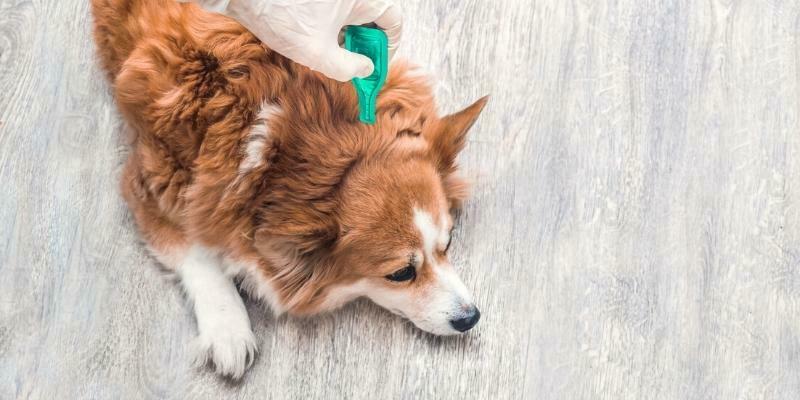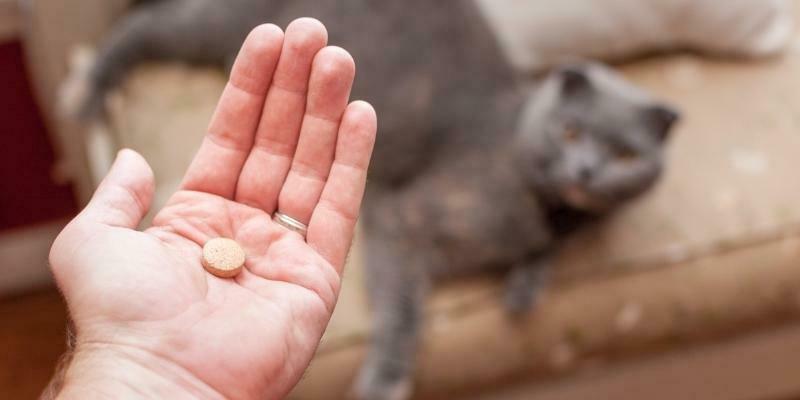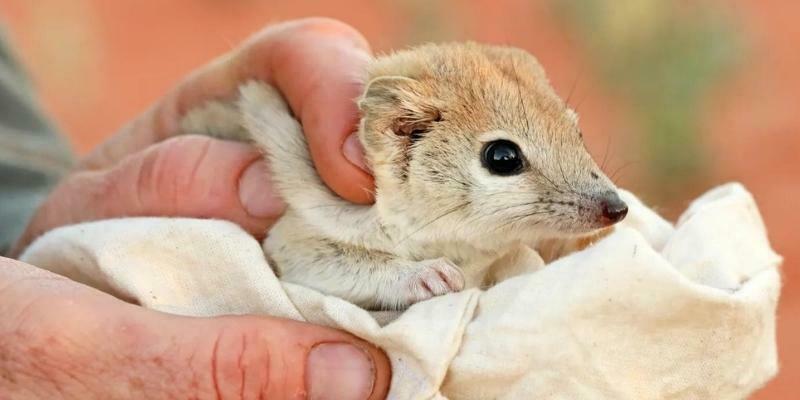| |
|
|
| |
Mira Mar Veterinary Hospital
|
|
| |
|
|
| |
|
|
| |
|
|
|
|

|
| |
April Newsletter
|
|
| |
|
|
| |
Hello and welcome to our April newsletter
Well can you believe that it is April already, and that Easter is upon us?
Once again we will be closed for the public holidays (Good Friday, Easter Sunday and Easter Monday), although as usual, we will have one of our veterinarians available for emergencies either by calling our regular clinic number and following the prompts, or calling the on-call mobile phone directly on 0428 936 020.
We wish all of our clients and their precious pets a safe and happy Easter holiday! |
|
|
|

|
| |
March Puppy Preschool Class 2
|
|
| |
|
|
| |
Nurse Jodie has been a busy girl this past month with TWO puppy classes graduating from Puppy Preschool! The first class was posted in our last newsletter, and here is the second class.
Congratulations to Banjo, Juno, Heidi, Dozer and Penny - how cute are they?
Please give the clinic a call on 9841 5422 if you have a puppy that would like to come along! |
|
| |
|
|
| |
CALL NOW
|
|
|
|

|
| |
Does my dog have worms?
|
|
| |
|
|
| |
Unfortunately, intestinal worms are pretty common in pets - and even the best-kept canine citizens can be susceptible. Young pups can become infected with worms through their mother’s milk or from contact with the faeces of other infected puppies, whereas adult dogs can potentially become infected from coming into contact with the faeces of other infected dogs, or from eating contaminated soil or wildlife.
How can I tell if my dog has worms?
Symptoms of gut worms will vary depending on your dog’s age and the type of worm they are carrying. The most common types of intestinal worms are:
- Roundworm, which can cause diarrhoea, vomiting and poor body condition
- Hookworm, which feeds on blood through the intestine, and can therefore cause weakness and anaemia (low red blood cells)
- Whipworm, large infestations which can cause chronic diarrhoea and weakness
- Tapeworms, which mostly just cause bottom irritation, but may cause intestinal upset if in large numbers
Young puppies tend to be more severely affected by gut worms than healthy adult dogs.
How can I treat and prevent intestinal worms in my pet?
Regular deworming of your pet with a gut all-wormer product should prevent them from developing significant worm issues. Keeping pets dewormed can also help to protect your family’s health, as some intestinal parasites carried by dogs can affect humans as well, with the most serious being the hydatid tapeworm, found in rural areas.
A traditionally recommended deworming protocol involves treating young puppies every two weeks until they are 12 weeks of age, and then deworming every three months thereafter. Dogs can also be dewormed if worm eggs are found on faecal testing, or if they show signs of intestinal worms - such as losing condition, poor coat, or rubbing their bottom.
Dogs in rural areas (particularly on sheep farms) may be recommended to receive tapeworm treatment every six weeks.
If you’re feeling squirmy about canine intestinal worms, ask our team for more personalised recommendations on keeping your dog worm-free! |
|
|
|

|
| |
Preventing parvovirus
|
|
| |
|
|
| |
Our team wants to ensure that all pets are up-to-date with vaccinations appropriate for their age, lifestyle and environment. However, we are particularly concerned about keeping all our canine patients protected against parvovirus.
It’s particularly important to protect dogs against parvovirus for several reasons:
1. Parvovirus causes nasty symptoms
Parvovirus causes damage to the intestines, and also attacks protective immune cells within the bone marrow. In very young puppies, the virus can cause heart inflammation and damage.
This means that dogs infected with parvovirus commonly experience symptoms of severe gut upset, including weakness, dehydration, tummy pain, fever, vomiting and profuse bloody diarrhoea. They can then develop shock (low blood pressure), which can affect other organs too. Unfortunately, this severe illness can prove fatal, even with treatment.
In young pups who suffer heart damage, the virus can also sadly progress to heart failure weeks-to-months after apparent recovery from parvovirus.
2. Parvovirus is still common
In many areas of Australia and New Zealand, parvovirus is still present and can cause outbreaks of disease, which largely affect young or unvaccinated dogs. Earlier in 2022 there was a severe parvo outbreak in Perth, although luckily we did not see any cases in Albany.
3. Parvovirus is very contagious
Dogs can become infected with parvovirus from contact with infected faeces or faeces-contaminated materials. The virus can remain active in soil for months to years after an infected dog has pooed in that area.
To protect dogs against parvovirus, we recommend keeping their core C3 vaccinations up-to-date. For most dogs, this involves a course of three puppy vaccinations, done at six-to-eight weeks of age, 10-to-12 weeks of age and 14-16 weeks of age, and then around 6-to-12 months of age. Depending on the type of vaccination being used, adult dogs are then recommended to receive boosters every one-to-three years thereafter.
Rest assured that vaccination is highly effective for the prevention of parvovirus in dogs.
If you’re unsure about your dog’s parvovirus vaccination status, ask our friendly team for further advice. |
|
|
|

|
| |
Cat flu? Ah-choo!
|
|
| |
|
|
| |
Despite the simple-sounding name, “cat flu” can be a complex issue for our feline family members!
What is cat flu?
Cat flu, also known as feline upper respiratory tract disease, is a pattern of respiratory unwellness symptoms that can be caused by several different types of virus or bacteria. 80-90% of cat flu cases are caused by feline calicivirus or feline herpesvirus, which are common in the Australian cat population. Less common causes include feline chlamydia and bacteria, such as Bordetella or Pasteurella.
However, when a cat develops respiratory unwellness due to calicivirus or herpesvirus, they will often develop additional “secondary” bacterial infections that will worsen their symptoms.
What symptoms does cat flu cause?
Cat flu causes signs of upper respiratory tract disease, which most commonly include symptoms such as:
- Sneezing, sometimes with clear or cloudy nasal discharge
- Conjunctivitis with red, sore eyes with clear or cloudy discharge
- Mouth ulcers
- Fever
- Reduced appetite
Symptoms can vary slightly depending on which specific “bug” has actually caused the infection.
Can we prevent cat flu?
The core F3 vaccination for cats includes coverage against feline herpesvirus and feline calicivirus. Whilst the vaccine can’t prevent cats from becoming infected with these illnesses (or passing the diseases on), it does significantly reduce the unwellness symptoms suffered by cats who catch the viruses, so is still very beneficial.
We recommend that all of our feline patients who may spend time around other cats (e.g. by going outdoors or into boarding) receive a vaccination booster annually, in addition to their initial kitten vaccinations.
Protecting your cat friend against some pretty nasty flu symptoms? It’s worth a shot! |
|
|
|

|
| |
That’s a tick for parasite prevention
|
|
| |
|
|
| |
Is your pet up-to-date with a thorough routine of external parasite prevention? Depending on your dog or cat’s home environment and lifestyle, common parasites that could hitch a harmful ride on your pet include fleas, paralysis ticks, brown ticks and mites, such as sarcoptes.
What symptoms do external parasites cause?
Fleas most commonly cause itchiness, which can lead to significant skin irritation and infection in pets who are allergic to flea bites. Heavy infestations of fleas in puppies, kittens or very old pets can also cause anaemia and weakness, due to blood loss.
Paralysis ticks, found on Australia’s eastern seaboard, cause progressive muscle weakness, which can sadly be potentially fatal for pets. Symptoms of tick paralysis include leg weakness (that progresses to an inability to stand up), increased breathing effort, a change in bark/meow and sometimes vomiting or regurgitation.
Unfortunately, brown dog ticks can carry the bacterial disease ehrlichiosis and pass it to dogs that they attach to. Ehrlichiosis can cause weakness, weight loss, abnormal bleeding tendencies and organ damage that can prove fatal. Cases of ehrlichiosis are increasing, and have now been confirmed in areas of Western Australia, the Northern Territory and South Australia.
Mites, such as sarcoptes, can be passed from wild dogs, foxes, wombats or dingoes to pet dogs and cats. Sarcoptes cause mange symptoms, involving severe skin itchiness that can progress to hair loss and skin infection.
How can I prevent my pet from suffering from external parasites?
There are various parasite-prevention options available including tablets, chews, topical drops and repellent collars, and our veterinary team can provide further advice specific to your pet.
Have a chat with our team for more personalised advice on how to keep those pesky parasites out of sight for your pet! |
|
|
|

|
| |
Avoiding medication “cat-astrophes”
|
|
| |
|
|
| |
While we prescribe various oral and topical flea, tick and worming medications for our feline patients, we understand that administering these products to cats at home is not always easy! Here’s how to keep home treatments for your resident feline friend low-stress.
Oral medications
Administering oral medications to cats requires gentle restraint and correct technique. Here is a video that demonstrates good techniques for giving tablets to your cat.
It can also help to:
- Coat tablets in something tasty, like softened butter, which will help your cat swallow the tablet easily
- Cut large tablets into quarters to administer in pieces
- Hide unpalatable tablets in flavourless gelatin capsules (which can be purchased at your local pharmacy)
- Hide tablets (either whole or crushed if the particular tablet is suitable – check with our team about this first) in a small amount of tasty food, administered to your cat when they’re hungry
Topical medications
Most topical flea products are designed to be easily administered to the skin at the back of your cat’s neck/scruff area, where they can’t lick it off. Some cats, however, can resent the feeling of the liquid and become uncooperative. It can really help to perform a gentle towel wrap restraint of your cat if they’re wriggly for this, as demonstrated in this video. Remember to have a treat ready for them afterwards, for a positive reward.
Occasionally, cats may suffer irritation or contact allergy reactions to certain products. If your pet seems very irritated by a particular product (seeming agitated, trying to lick or scratch at the spot for a long time after application, or developing a red skin patch in that area), please seek veterinary advice, and ask us about alternative products to try.
And don’t forget, if you’re really struggling to administer routine treatments to your cat, you can always have a chat with our friendly team. Depending on the particular treatment, we may be able to recommend an easier alternative product. Otherwise, our experienced nurses and vets are always happy to provide hands-on help medicate your cat in the clinic. |
|
|
|

|
| |
Animal News In Brief
|
|
| |
|
|
| |
DJ smiling non-stop after being rescued
Image source: The ABC
DJ the border collie’s miracle rescue
In all the darkness and disaster of the catastrophic floods wreaking havoc through Queensland and New South Wales recently, one Bungawalbin family found a glimmer of light when their dog was found days after being lost. When the O’Toole family’s house became inundated by water, like so many other victims of the 2022 floods, they climbed to the rooftop for safety. Ready for evacuation, the family and their elderly neighbour waited to be airlifted by the Australian Defence Force helicopter, when DJ, the O’Toole’s beloved border collie, slipped from the family’s grip and fell into the water. When the ADF pilot told the family they had to go, Mr O’Toole said he was faced with an impossible choice: leave DJ or risk his own chance of being found again. After three days, finding DJ was looking far from hopeful, but after a six-hour search using both a jet ski and a boat, volunteer Dave Oneeglio was greeted by the sight of a black and white dog upon a pile of metal in the distance - DJ. After surviving the three days he was missing for, DJ was finally reunited with his family. Despite the O’Toole family losing all of their possessions and not a brick of their house remaining, DJ’s rescue had Mr O’Toole in high spirits. “When we found the dog I thought, 'Who cares?' You couldn't wish for anything better," he said. During DJ’s rescue mission, 16 other pets were located and safely returned to their families. Mr O’Toole expressed that after finding DJ, “there's hope still.”
Read more about DJ’s rescue mission from The ABC.
-----
Do sharks sleep?
While scuba divers have long suspected it, until recently, little scientific research had been carried out to find out whether sharks sleep. A new study by a team of scientists, now published in the journal Biology Letters, has for the first time officially documented that ‘Jaws’ does indeed need to get some kip. Over a 24-hour period, the team observed a group of bottom-dwelling draughtsboard sharks, measuring the drop in the sharks’ consumption of oxygen when inactive for more than five minutes, which was more than when the sharks were resting while awake or actively swimming. But it wasn’t just these findings that helped the team decipher whether the big fish sleep. As ambush predators, when draughtsboard sharks are resting but still awake, they sit with their heads up, poking out their pectoral fins. So when the team found the animals lying flat, the mystery of shark slumber was starting to be solved. As draughtsboard sharks can manually push water over their gills to breathe even while sleeping still, other sharks, such as great whites and tigers, must keep swimming to ventilate their gills, or else they die from a lack of oxygen. Team leader of the study, Dr Michael Kelly of La Trobe University, said the myth that ‘because these sharks have to continuously keep moving, they obviously can’t sleep’, is being debunked by the minute, as is visible in whales, dolphins and birds, “staying still is not a criteria for sleep.”
Read more about the study on draughtsboard sharks from The Guardian.
-----
Kids these days - opting for fur babies over human ones
With climate change, growing inflation of everyday expenses and what seems to be a never-ending rise in the housing market, more and more people are choosing to bring a four-legged family member into their household, than a two-legged one. Over the pandemic, there has been a boom in pet ownership placing strain on the veterinary industry. But these days, the notion of what it means to own a pet goes beyond what it used to. Raising pets these days is more connected to the experience of parenthood than it’s ever been, with a study conducted by Kelton Research finding that 78% of female dog owners consider themselves a “dog mum” rather than an owner. While Australia’s childbirth rate is at an all-time low, 69% of Australian households are pet owners and more than 60% of pet owners are at the parental age of 26-41 according to a recent survey by Animal Medicines Australia. Pet ownership is so rewarding, it’s no wonder we dub them “fur babies.” Aside from the many physical benefits of dog ownership, owning a pet in general offers us more responsibility, routine stability, an abundance of unconditional love, companionship and a very good, slobbery, fluffy, purring or tail-wagging reason to help us hop out of bed in the morning.
Read more about the rise in millennial pet ownership from Are Media. |
|
|
|

|
| |
When the cat’s away, the mulgaras will play (and repopulate)
|
|
| |
|
|
| |
Mulgara being released into feral-free zone
Image source: The Sydney Morning Herald
Although they’re locals to the area, bilbies, bandicoots and mulgaras have been chased out of north-western NSW to a point of extinction, due to the threats of wild cats and foxes. But a recent rewilding project in Sturt National Park has seen the native animals thrive back in their natural habitat above conservationists' initial expectations.
The conservation efforts have prevented wild cats and foxes from entering the area to ensure the safety and repopulation of these little native critters. Dubbed ‘feral-free zones’, these spaces are now seeing their desert ecosystems restored, with estimates showing that the released wildlife have already doubled in population in just six months.
We might not like to hear it, but cats, both domestic and wild, are responsible for killing billions of native wildlife in Australia each year. An individual roaming pet cat alone is estimated to kill 186 reptiles, birds and mammals annually, while feral cats collectively kill more than three billion per year! Cats have played a major role in most of Australia’s 34 mammal extinctions and continue to pose an extinction threat to at least another 120 species.
The best way to prevent your cat from hurting native wildlife is to keep them inside as much as possible, preferably 24/7. The best way to prevent your cat from hurting native wildlife is to keep them confined indoors or in an enclosed outdoor area. Check out the Vet Voice website and this resource guide for tips on how to keep your cat happy, fulfilled, and away from our native animals!
Despite the success of Sturt National Park’s feral-free zones, conservation efforts to protect wildlife from predators can only go so far, as the impacts of climate change and habitat removal, caused by property development and deforestation, are an ongoing issue.
In order to protect Australia’s wildlife, key ecosystems and vast biodiversity, drastic measures need to be implemented at both state and national levels, rapidly.
Read more about how cats are impacting wildlife from Vet Education and the Sturt National Park rewilding project from The Sydney Morning Herald. |
|
|
|
| |
This email contains comments of a general nature only and is not intended to be a substitute for professional veterinary advice. It should not be relied on as the basis for whether you do or don't do anything.
All content © PetPack 2022 |
|
|
|
[Footer]
|